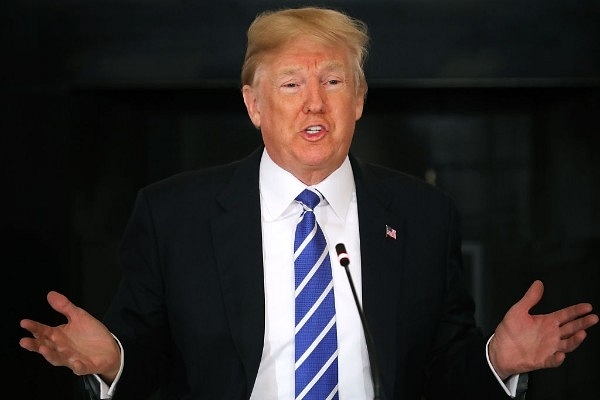World
Making America’s Infrastructure Great Again – Trump Unveils $1.5 Trillion Plan
- Trump’s new infrastructure plan necessitates the Congress to authorise $200 billion over the next decade to spend on roads, highways, ports and airports.
- The plan has invited criticism on predictable ideological lines.

US President Donald Trump speaks during a meeting with state and local officials to unveil his administration’s long-awaited infrastructure plan. (Chip Somodevilla/Getty Images)
The United States (US) President Donald Trump has unveiled his ambitious plan to revamp the country’s infrastructure.
During his widely praised State of the Union address last month, the President had outlined the broad contours of his administration’s infrastructure plan. He had presented his grand vision to revive the failing American infrastructure. “We will build gleaming new roads, bridges, highways, railways, and waterways across our land. And we will do it with American heart, American hands, and American grit,” he had said.
Trump’s new infrastructure plan necessitates the Congress to authorise $200 billion over the next decade to spend on roads, highways, ports and airports. The premise of the plan is that the federal government investment will crowd in another $1.5 trillion new infrastructure spending by the private sector and US states over the next 10 years.
The key building blocks of the $200 billion plan include:
- $100 billion in matching incentive funds to be made available from the federal government to states and cities. The objective is to “spur additional dedicated funds from States, localities, and the private sector”.
- A $50 billion rural block grant programme dedicated to modernising infrastructure in rural areas. Trump’s triumph in the 2016 presidential election largely came about on account of the massive support that he gained in rural US.
- $20 billion in loans and bonds to finance private sector projects on transport and water.
- A $20 billion fund for “projects of national significance”. These are projects for the future as opposed to mere rebuilding of the current infrastructure.
- A $10 billion capital financing programme that would fund the construction of federal office buildings and infrastructure for government use.
It is as yet unclear how the new proposal will be funded, though the plan places the onus on states and localities to raise the major part of finance for the projects. The President did not provide specifics except saying that the $200 billion funding to support the plan will be raised by enforcing spending cuts elsewhere. The Congress will determine the programmes that will be pruned for making the money available.
Experts estimate that the US needs at least $2 trillion to repair, restore and rebuild its increasingly decrepit state of infrastructure.
As per the World Economic Forum, the US, which once boasted of the best roads and airports, is currently tenth in the world in terms of the quality of overall infrastructure.
The President’s plan has invited criticism on predictable ideological lines. The House Democratic leader Nancy Pelosi described Trump’s $1.5 trillion infrastructure proposal as “puny” because it translates to mere $200 billion in federal spending over 10 years, even as the rest of it would come from states, local governments and the private sector.
Democrats have been advocating five times more spending to spruce up the country’s infrastructure through public investments.
Writing in Fortune magazine, Lindsay Koshgarian, who directs the National Priorities Project at the Institute for Policy Studies, described the plan as a scam.
“Private investors care about only one thing, and that’s maximizing profit. They won’t be drawn to projects that won’t make them enough money, no matter how badly needed the projects are,” Koshgarian wrote.
“And even for projects that do materialize,” added Koshgarian, “private investors’ need for profit means the costs of building new infrastructure are often passed along in the form of road tolls or other fees—sometimes, these can be exorbitant. This dispels the commonly held myth that privately financed projects are always a better deal for taxpayers. As another corporate giveaway, the plan would encourage putting major public infrastructure (like, say, Ronald Reagan Washington National Airport) up for sale, and would loosen environmental rules designed to protect local communities.”
Introducing ElectionsHQ + 50 Ground Reports Project
The 2024 elections might seem easy to guess, but there are some important questions that shouldn't be missed.
Do freebies still sway voters? Do people prioritise infrastructure when voting? How will Punjab vote?
The answers to these questions provide great insights into where we, as a country, are headed in the years to come.
Swarajya is starting a project with an aim to do 50 solid ground stories and a smart commentary service on WhatsApp, a one-of-a-kind. We'd love your support during this election season.
Click below to contribute.
Latest